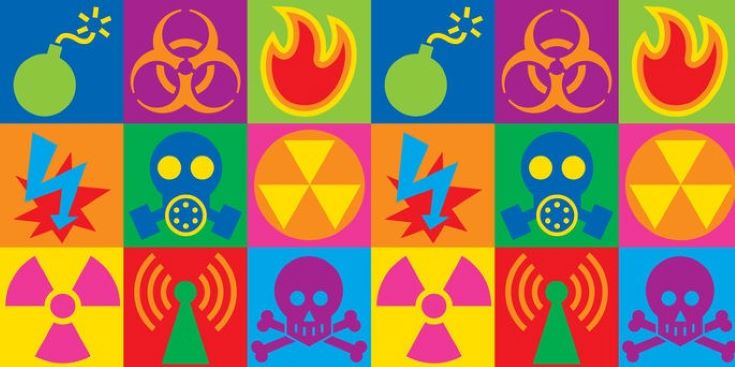Catch-22 dilemma in response to complex emergencies
In my latest blog I would like to attract the attention of terrorist attack responders to the Catch-22 dilemma and to ask for points of view on it.
So, what is Catch-22? Joseph Heller first coined the phrase in his classic novel of 1961 where the main character, Captain John Yossarian, found himself in a ‘damned if you do, damned if you don’t’ paradoxical situation. A member of the US Air Force, the only way for Yossarian to avoid highly dangerous bombing missions was on the grounds of insanity, but to plead for exemption would actually be proof of his sanity, as surely no one of sane mind would keep flying the missions – this was the only catch – hence, Catch-22.
The dilemma is well known to responders to terrorist attacks and could be a massive problem for responders to CBRN incidents.
Professional responders have an assumption that public behaviour during an emergency is very much characterised by irrational panic, which can be true in some – although by no means all – cases. It is a particularly big problem when crowds are involved. For the individual, the rational message might get through and be understood. However, the more stressful and/or emotional a person becomes, the more unlikely this is. For crowds, rationality is largely the wrong way forward, it is most often irrationality that works.
CBRN is a very complex issue and it is very difficult to explain to a layperson – using simple language – what has happened and how to act. So, the communication is therefore limited and coarse-grained; there are lacunas in information delivered to the public. And members of the public are often aware of this. This perceived vacuum of information, the feeling that something is being deliberately withheld by authorities, can create panic, anxiety and confusion among the public. At the same time, we understand that in a major CBRN-related incident, the victims themselves will be the first responders, and therefore they should have precise information on their circumstances and how to react.

Clear and concise communication with the public before, during and after responses to CBRN attacks is paramount
Is it possible to find a balance and avoid the Catch-22 dilemma in communication with the public during the CBRN incidents or during a complex terrorist attack?
Such balance is possible, but on the condition that the communication starts before the attack or incident. Repeated chemical attacks by various actors in the context of the Syrian conflict, the Novichok case in Salisbury (UK) and the disruption of two ricin terror plots in Germany and in France in 2018, are all stark reminders that the CBRN threat remains real for states, that societies can be affected and this threat could pose a real challenge to response systems.
The Fukushima case showed that a natural hazard may develop into a serious nuclear incident, where all state response systems become challenged to their maximum. Therefore, we have to talk to the public about CBRN or complex threats before incidents occur and provide a clear explanation and modus operandi during the potential incident; remembering, as previously mentioned, that victims could be the first responders themselves.
There is therefore a need for communities to develop non-conventional protection methods orientated towards citizens and encouraging their involvement. Such education and advance communication would allow information delivered during the incident to be:
-
speedy
-
clear
-
relevant
-
trustworthy
-
not contradictory
We need to work together to find schemas and frameworks that enable simple, understandable and actionable communication. A large part of that work is to deliver the context into the minds of individuals and public in general, prior and without a link to any specific incident. With such a context already in place, communication during an incident can massively benefit both those communicating (the crisis management team) and those receiving communication (responders, the public) by being much shorter and more relevant, conveying the messages in a straight and perceivably complete and coherent way, and leaving no obvious gaps which otherwise could cause the public to lose trust in the authorities dealing with the crisis.
In the case of a CBRN incident, information should not be too scientific or technical, as this can be complex, and therefore cause stress and panic for unprepared minds. Whenever directly involved in or affected by an incident, the public wants information about the measures that emergency responders are taking, how this helps, and how effective these measures are.
Preferences for risk communicators can vary. However, it is clear that directly affected members of the public want to receive information from individuals who are invested with formal authority and who capable of demonstrating leadership skills, balanced by compassion and respect for the concerns of the public.
I would like to encourage a discussion on the Catch-22 dilemma during the response to CBRN incidents or complex terrorist attacks. Please, contact me at lina@crisis-response.com
Lina Kolesnikova, 10/05/2019